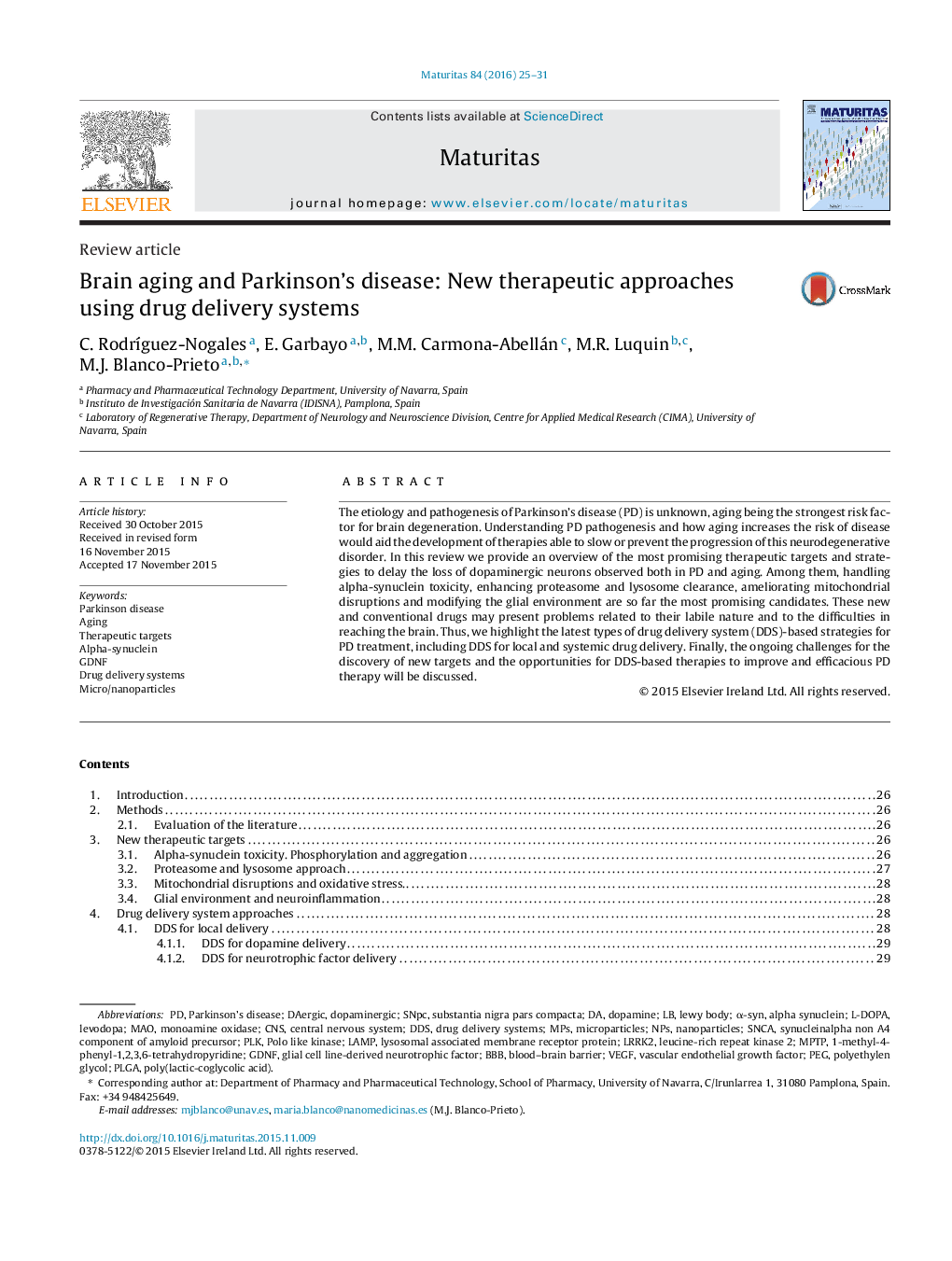| Article ID | Journal | Published Year | Pages | File Type |
|---|---|---|---|---|
| 1917019 | Maturitas | 2016 | 7 Pages |
•The etiology of Parkinson’s disease (PD) is unknown, aging being the strongest risk factor for brain degeneration.•The most promising therapeutic targets and strategies to delay the loss of dopaminergic neurons observed both in PD and aging are reviewed.•The latest types of drug delivery system (DDS)-based strategies for PD treatment are summarized.•The ongoing challenges for the discovery of new targets and the opportunities for DDS-based therapies discussed.•The emerging strategies summarized in the review show promise for better therapies for PD.
The etiology and pathogenesis of Parkinson’s disease (PD) is unknown, aging being the strongest risk factor for brain degeneration. Understanding PD pathogenesis and how aging increases the risk of disease would aid the development of therapies able to slow or prevent the progression of this neurodegenerative disorder. In this review we provide an overview of the most promising therapeutic targets and strategies to delay the loss of dopaminergic neurons observed both in PD and aging. Among them, handling alpha-synuclein toxicity, enhancing proteasome and lysosome clearance, ameliorating mitochondrial disruptions and modifying the glial environment are so far the most promising candidates. These new and conventional drugs may present problems related to their labile nature and to the difficulties in reaching the brain. Thus, we highlight the latest types of drug delivery system (DDS)-based strategies for PD treatment, including DDS for local and systemic drug delivery. Finally, the ongoing challenges for the discovery of new targets and the opportunities for DDS-based therapies to improve and efficacious PD therapy will be discussed.
